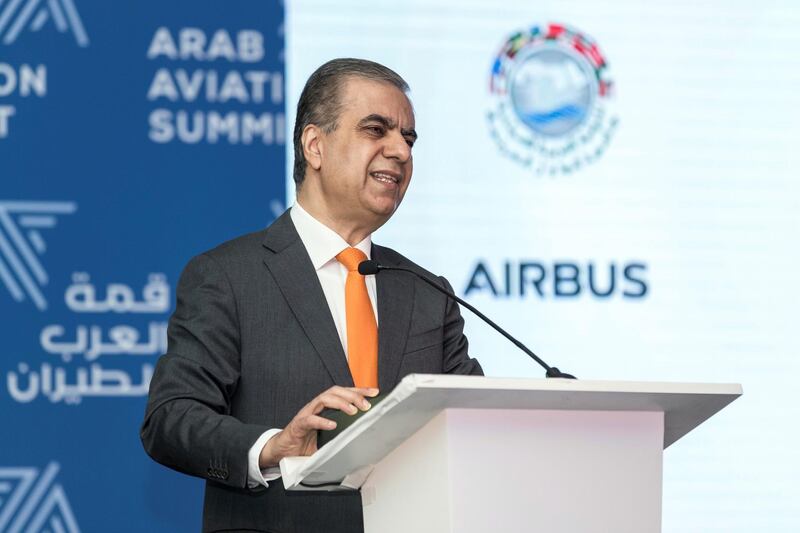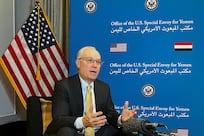Air Arabia, the low-cost airline from Sharjah, aims to expand its fleet to more than 100 planes by 2025, from 60 today, as it increases its operations across the Middle East, Africa and Asia, its chief executive said.
The Dubai-listed company is in talks with manufacturers including Boeing, Airbus and Embraer to purchase around 100 new aircraft to replace retiring planes and expand its fleet. It expects to place an order before the end of 2019, said Adel Ali on Sunday.
“We envisage growing the fleet to around 100 or 100-plus by 2025,” he said.
Mr Ali spoke earlier this year of plans to buy 100 narrow-body aircraft worth $11 billion (Dh40.3bn) at list prices before the end of 2018, but discussions are ongoing. Mr Ali said the airline has not yet confirmed which planes it wants.
“We are looking at A320s, A321s, the C-Series, the new Embraer [E2] – we would be naive not to consider all options.”
Air Arabia has around 60 aircraft, mainly the Airbus A320 and A321 – some of which are in the process of being replaced through a lease agreement signed last November for six A321neo long range jets capable of flying for up to seven hours. These are joining the fleet from early next year.
The airline will begin talks with banks in 2019 to finance the new order, Mr Ali said.
Air Arabia flies to 150 destinations in Europe, the Middle East and North Africa from its three hubs in Sharjah, Morocco and Egypt. The company is eyeing new routes in China – where it has additional air traffic rights not yet exercised – as well as in West Africa, Eastern Europe and Asia.
“We are starting with the longer range planes that will open a few more markets for us, particularly on the east side of the world,” Mr Ali said.
The airline has typically sought to tap under-served markets, but there are also existing routes that will require greater capacity, he said.
There are no plans to open any new hubs. Air Arabia closed its Jordan operations earlier this year and does not intend to re-open it. "It was difficult to get traffic rights for a non-Jordanian airline so we decided not to do something that loses us money."
___________
Read more:
[ Air Arabia Q2 profit dips 24% on flat passenger numbers ]
[ Air Arabia may consider Boeing, Airbus or Embraer aircraft as it looks to future fleet ]
[ The best is yet to come for Air Arabia ]
___________
Air Arabia reported a 24 per cent year-on-year profit decline for the second quarter of the year, attributed to high fuel prices and seasonal travel flows.
The company is due to report its third-quarter results in the coming days. Mr Ali said the Q2 profit drop was in comparison to a “record year” in 2017 when oil prices were lower and fuel was cheaper.
Oil prices have now risen to more than $80 per barrel after a three-year slump, but the chief executive said Air Arabia's hedging policy will cushion the airline from any negative effect in its full-year earnings.
In June, Air Arabia disclosed a $336m exposure to ailing Abraaj Group, the Middle East private equity firm undergoing a provisional liquidation.
Mr Ali reiterated previous statements from the carrier that the exposure has no impact on its operations or expansion plans.
Like other creditors, Air Arabia is awaiting further information from the liquidators.
The airline yesterday unveiled a new logo for its planes to mark its 15th anniversary. Its classic bird motif has been tweaked and the ".com" part of the Air Arabia name removed from across the fuselage.
The redesign was in part to appeal to a rising number of millennial travellers, he said.
“Fifteen years ago for people to [book] travel online was something new,” Mr Ali said. “Today, if you’re not online, hardly anybody travels with you, so I think people know we’re online now.”
He declined to reveal the cost but said it came from the company’s “normal” annual marketing budget and is an “insignificant” sum.






